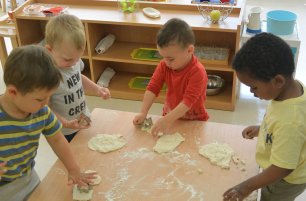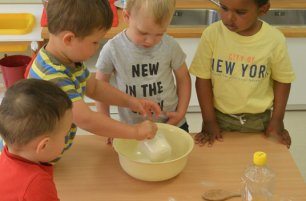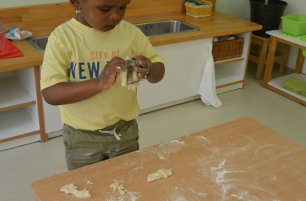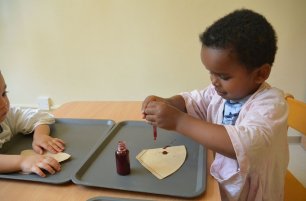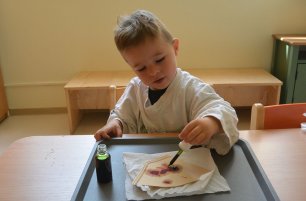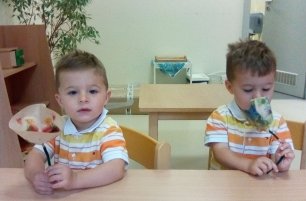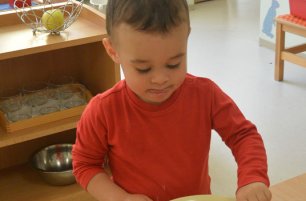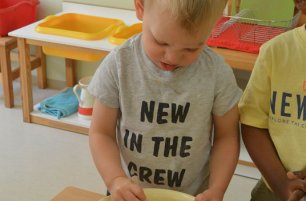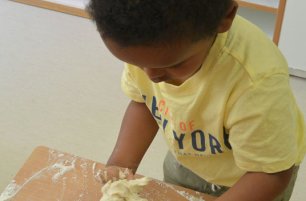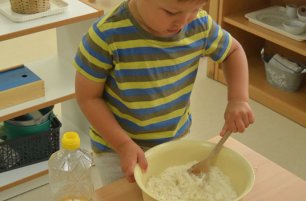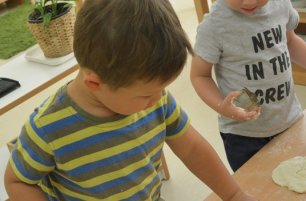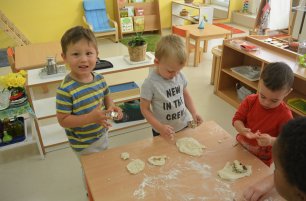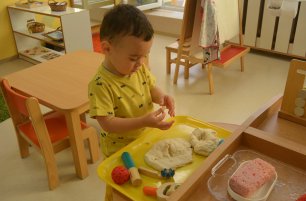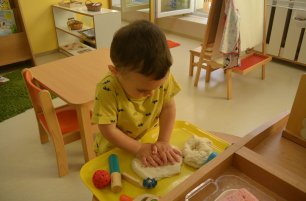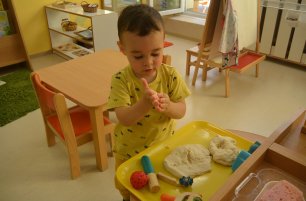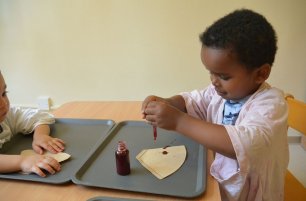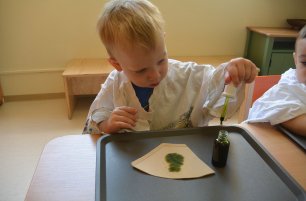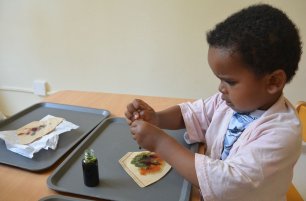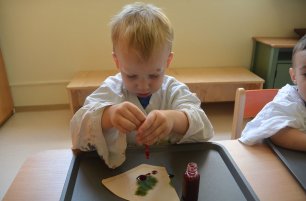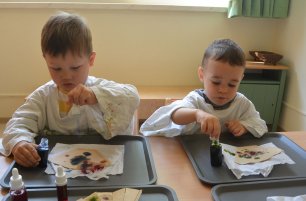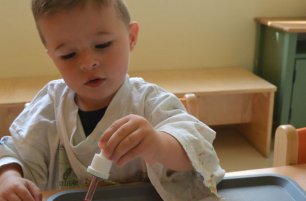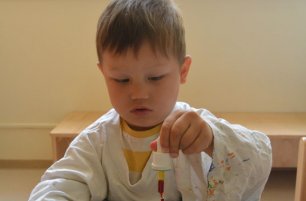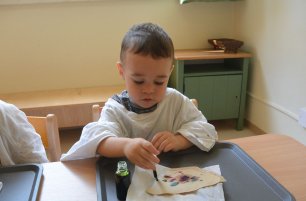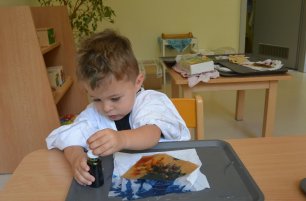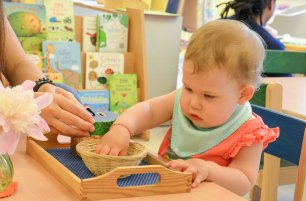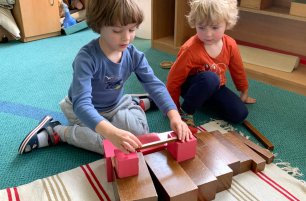Summer Camp
Our Summer Camp continues! We have made Playdough and created "Coffee Filter Flowers" with food coloring. Both activities can be easily done at home with your toddler using items you probably already have in the kitchen. You can find both recipes on our blog. Enjoy!
Toddler-Friendly Playdough
This recipe requires two cups flour, half cup salt, 3/4 cup water, 2 tablespoons oil. First, you can show your toddler how to pour in the dry ingredients and mix with a spoon. Then they can pour in the water and oil; you can also add some food coloring if you have it. Your toddler can mix it all together, then sprinkle some flour on your table and show them how to use their hands to shape and knead the dough. This is great work for building muscle strength in the hands! You can also use some cookie cutters to make shapes - our toddlers loved doing this!
Coffee Filter Flowers
This fun activity can be recreated at home using only a coffee filter, food coloring, and a pipette or eyedropper. We recommend using a tray with sides for this activity to keep the food coloring contained. You can show your toddler how to use two fingers to squeeze their eyedropper into the food coloring and then again onto their coffee filter. Here we mixed colors together; it was a great opportunity to practice language and talk about how the colors look different when they mix! It's also good practice for your toddler to help develop their pincer grip, fine motor skills, and hand-eye coordination.
Banana Smoothies
Our toddlers loved this easy smoothie recipe! All you need is 1 banana, 1 cup (or a little more) of milk, and a sprinkle of cinnamon. Your toddler can peel the banana and break it into small chunks then put inside the blender. You can use a small pitcher and show your child how to pour the milk using two hands into the blender. We used a small spoon to sprinkle in some cinnamon too. Your toddler will love watching the items mixing together! It's a great way to try a healthy snack and everyone will enjoy it. ?
Toddler Science Experiments
A fun and engaging activity for you and your toddler! These easy science experiments are sure to keep your child's attention and it's a great way to make learning fun.
Oil and Water - Our toddlers helped pour the water and oil into a large tray with sides. It is a great learning opportunity to talk about oil and water separating and what it looks like, then you can add a few drops of food coloring and watch the colors mix and separate! We used toothpicks again to mix colors together. Another great language and learning lesson!
Baking soda and Vinegar "Volcano" - All you will need for this activity is one or two tall, narrow vases, baking soda, vinegar, and food coloring. You can show your child how to use a spoon to pour some baking soda inside the vase. Another great way for your toddler to practice transferring with their hands which helps their hand-eye coordination and muscle control. Then together you can add a few drops of food coloring. We showed the toddlers how to hold the small pitcher with two hands and carefully pour the vinegar inside the vase. Then watch your "volcanoes" erupt! You can keep the activity going by adding more baking soda and/or vinegar to the vase.
"Sensory Jars" - Another fun activity to engage in with your toddler! You can recycle an old plastic or glass jar with lid, and then all you will need is some Corn Syrup or Corn Starch (or Glycerol), water, and some fun glitter, sequins, beads or small items to put inside. Show your toddler how to carefully pour some water inside their jar, it should be no more than half full of water. Add the corn starch or glycerol almost to the top of the jar and then add your little items! Remember to shake shake shake! Have fun with your toddler shaking the jar so that everything mixes together! Watch the items float and "swim" inside their jar. Have fun!
